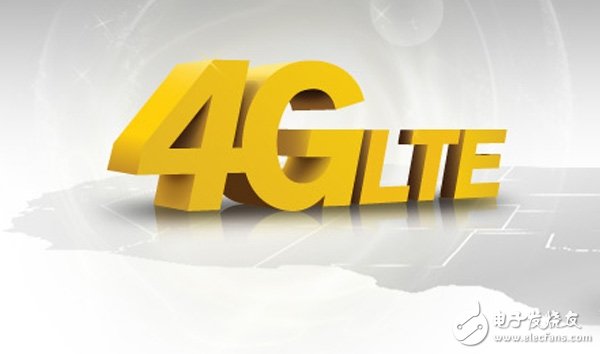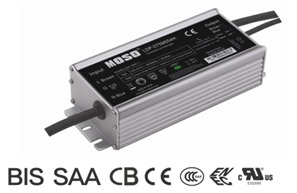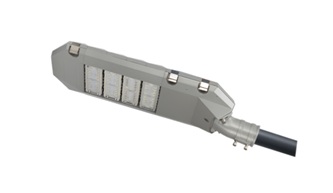LTE smart phones are coming at the end of the year, perfecting the industry chain and leading the 4G leap forward
The 3G era can be described as a qualitative leap in mobile communication technology, but now 4G is striking with unparalleled superiority. With the rapid rollout of global 4G LTE networks, all links in the industrial chain, especially the terminal market, have begun a new round of competition. According to Yonhap News, data released by market analysis company Strategic Analysis shows that global LTE smartphone sales this year are expected to triple to last year. Strategic Analysis said that a total of 270 million LTE smartphones will be sold this year, accounting for 29% of global smartphone shipments. The rapid growth of LTE smart terminals has provided new blood for Fengyu's industrial chain, and the perfect industrial chain is inevitable to promote the development of 4G.

Say goodbye to Qualcomm's monopoly on LTE chips
Taiwan ’s 4G release was launched, mainland China accelerated the promotion of LTE business conversion, and the rest including North America and the Asia-Pacific market are actively promoting LTE deployment. Market survey agencies estimate that the number of LTE users will exceed 100 million this year, supporting LTE smartphone sales. It is expected to grow twice as much as last year. The major mobile phone chip manufacturers all hope to get rid of the 3G era and dominate the situation of Qualcomm, sharing 4G business opportunities, including MediaTek, Marvell and Broadcom. It is expected that the LTE solution will be released before the end of the year. Formally entered the era of the Warring States.
Cai Mingjie, Chairman of MediaTek at the shareholders meeting this year, revealed the progress of the layout of the 4G mobile phone solution. The launch time of the MediaTek 2G mobile phone solution is 10 years behind the opponent, and the 3G solution is about 6 to 7 years behind the opponent. The 4G solution is expected to Launched in the fourth quarter, the gap with opponents has been greatly reduced to 1 to 2 years, a great improvement. The implication is that MediaTek in the 4G generation is expected to get rid of Qualcomm's patent barriers and return to the competition.
In addition, according to the market research agency Gartner's research on the global Netcom chip industry, with the multi-frequency and multi-mode LTE solutions released by chip manufacturers, the LTE chip market will gradually move towards the Warring States era, although Qualcomm has been transferred to LTE in North America, Japan, and South Korea. Is still in a leading position in the market, but the time to lead other players has been reduced to only about 1 year.
It is worth noting that Gartner analyzed that China has leapt to the world's largest mobile phone sales market. China Mobile is fully promoting the TD-LTE commercial transfer, which will set off demand for LTE baseband chips, including MediaTek, Intel, Broadcom, Content, NVIDIA and other backward LTE. Chip manufacturers have stepped up the card position.
Hong Cenwei, vice president of Gartner's wireless research department, bluntly stated that with MediaTek's advantage in the Chinese market, he has the opportunity to win the second place in the LTE chip market. He analyzed that MediaTek has a solid customer base in the 3G mobile phone market in mainland China, and has close cooperation with telecommunications companies. In addition, the public board solution has a price advantage. It is expected that the same model will be copied in the LTE generation in the future, adding imagination to the growth of LTE chips.
MediaTek plans to publish the application processor integration LTE baseband system on a chip (SoC) in the first half of next year to improve product cost performance. Gartner expects that although NVIDIA has launched integrated SoCs, Content and Broadcom have similar product plans, but MediaTek in China The market layout is deep. After the introduction of SoC, it will help further expand the LTE power territory and narrow the gap with Qualcomm. In the 4G era, MediaTek is second to none, and Intel ranks third.
As for the threat of Chinese local IC companies, Hong Cenwei believes that regardless of Spreadtrum or Haier ’s HiSilicon, RDA will not be a threat to MediaTek in two or three years, but based on RF and PA technology. It is a Chinese chip manufacturer with more opportunities in the future communication chip market.
LTE smart terminals are growing rapidly
Since the Swedish operator TeliaSonera launched the world's first commercial LTE network in December 2009, LTE has been widely recognized as the fastest-growing wireless communication technology in history, driven by countries and regions such as Europe, the United States, Japan, and South Korea. The market research organization Strategy AnalyTIcs recently released a study showing that in 2013, LTE will be commercialized globally, and this process will accelerate the industrialization of LTE. "2013 is clearly a 4G year. LTE has quickly become a high-growth, high-value market that operators, service developers, parts manufacturers or equipment manufacturers dare not despise." Said Neil Mawston, executive director of Strategy AnalyTIcs.
Smartphones are the largest type of LTE equipment. Various data shows that the models and sales of LTE smartphones are increasing rapidly. From 2011 to the present, LTE smartphones have increased rapidly. A total of 221 LTE smartphones have entered the market in the past two years, accounting for 33% of the overall LTE device models, a year-on-year increase of 360%. At the same time, according to data released by Strategy AnalyTIcs, 92 million LTE smartphones were sold globally last year, accounting for 13.1% of the global smartphone market.
Therefore, it is foreseeable that 2013 will be an extremely critical year for the development of global LTE. From the perspective of smart operating systems, application processors, smart phone screens, etc., the number of global LTE users and the types of LTE terminals will increase rapidly in this year As the development of LTE technology is maturing, the rapid growth of users will inevitably bring about a benign development of the industry chain. From the operating data of global operators and terminal manufacturers, this growth trend of LTE smart phones will continue forever.
The LTE market is broad, leading manufacturers to compete
In 2012, 3G smartphones accounted for more than 90% of the market. Entering the 4G era, smartphones are clearly the trend. The rapid increase in the scale of smart phones also benefits from the improvement of the LTE industry chain. In the 3G era, smart terminals have become the core driving force for the development of the operator's industrial chain. Therefore, in the 4G era, the development of the industrial chain is still the key. In this way, the competition of terminal vendors is also an inevitable trend. Therefore, at present, in the global scope, 4G industry chain, including chip manufacturers, component manufacturers and terminal manufacturers, are actively promoting the production of smart terminals to seize the LTE terminal market.
Due to the rapid development of the foreign LTE industry in the past two years, the network and terminals are becoming more and more mature. In the US and Japanese markets, 100% of the newly launched mobile terminals of operators are LTE; in China, mainstream terminal manufacturers include Huawei, ZTE, Coolpad, etc. In terms of 4G technology terminals, it also has the ability to realize mass production of products. A report from GSA in March this year showed that there were 821 LTE terminals worldwide, including 655 models supporting FDD-LTE and 166 models supporting TD-LTE. At the Global Mobile Communications Conference at the beginning of this year, Qualcomm, Broadcom, Nvidia, Ericsson and other global mobile phone chip manufacturers have launched related LTE products, and MediaTek and Spreadtrum are also actively planning to compete with Qualcomm in the Chinese smartphone market. This shows that LED's future competition in the domestic market will also be very fierce.
ZTE is the world's first manufacturer to launch a full range of 4G products. Following its Grand Era LTE launched last year and the world's first single-core 4G smartphone, in July of this year, ZTE's US subsidiary united with AT & T's new prepaid Brand AIO announced the launch of 4G LTE smartphone-ZTE Overture. Huawei, as the world's leading provider of information and communication solutions, has invested fully in standards, chips, terminals, system equipment, and business applications, and has gained in various fields. After launching 8920, the first TD-LTE mobile phone, Coolpad is expected to launch about 8-10 LTE terminals this year, involving the mid- to high-end market.
In this regard, Ericsson is not to be outdone, pushing TD-LTE to go global. Not long ago, Ericsson demonstrated TD-LTE HD voice and video calls (VoLTE) on Sony commercial smartphones for the first time in the industry. The demonstration was conducted at the Ericsson Northeast Asia Wireless Innovation Laboratory and the Demo Center (WILD Center) in Shanghai, which not only set a new milestone for the maturity of the TD-LTE ecosystem, but also helped telecommunications operators around the world to Its TD-LTE users provide high-quality voice and video calling experience.
Industry improvement chain promotes 4G development
Today, mobile Internet is developing rapidly, applications are changing with each passing day, and the number of smart terminal holdings is exploding. All of this has led to a substantial increase in global data traffic. Previously, KPCB released the "Mobile Internet Trend Report" that pointed out that global mobile data traffic in the next 5 years It is expected to grow 26 times. Recently, Goldman Sachs, one of the world's largest investment companies, released an investment report, stating that due to the extreme demand for traffic in the global market and related links in the industry chain will benefit from the deployment of LTE, LTE will be rapidly deployed around the world.
"We believe that 4G LTE will be quickly accepted by the market in the next few years, and this speed will exceed the previous evolution of 2G to 3G." Goldman Sachs said in the report. As for the future direction of LTE, Goldman Sachs pointed out in the report that after several years of discussion on advantages, time and feasibility, LTE gradually became a reality as Verizon finally began to truly deploy. Goldman Sachs expects LTE to be accepted more quickly in the next few years, and the number of LTE networks around the world will increase by orders of magnitude—from more than a dozen to 120.
In addition, foreign media recently reported that the Global Mobile Suppliers Association (GSA) confirmed in the latest information of the LTE progress report released recently that a total of 218 operators in 81 countries are investing in LTE, a significant increase from 98 in 2010. During the same period, 32 countries and regions have begun or plan to deploy LTE systems. It can be seen that the global development of LTE is the general trend.
Therefore, 2013 is undoubtedly an important year for the Chinese mobile communications industry. With the enthusiastic pursuit of global operators, the quasi 4G (fourth generation mobile communications) LTE network construction that has not been available for a long time has gradually become a prairie trend. In the world's largest telecommunications market, Chinese operators and terminal operators are also rapidly expanding their layouts, trying to get rid of the role of followers in the 2G and 3G era. It can be said that the construction of the operator's LTE network provides the basis for the development of the terminal industry chain. In turn, the improvement of the terminal industry chain has further promoted the development of 4G. At present, through the joint efforts of the entire mobile communications industry, the development speed of China's 4G network has become unstoppable. It is foreseeable that in the near future, China's communications industry will leapfrog from "Made in China" to "Created in China", and the global mobile industry will also undergo unprecedented changes.
MOSO Programmable LED Driver has programmable output current and constant power design. It is a brilliant design with advanced technologies. One Programmable driver can deliver different output currents and voltage at same power. It's easy for the fixture design and flexible for varies of outdoor application.


The Programmable Power Supply that operates in constant current model. Monitored by an infrared based programming device, the fully programmed drivers offer all dimming options (0-10V/PWM/Timing control/DALI) and a wide range of output current in a single driver, which deliver maximum flexibility with customized operating settings and intelligent control options for lighting manufacturers.
This Programmable LED Driver with varies of global safety certifications, including UL, CE, TUV, ENEC, CB, SAA, BIS, KC, etc compatible with the safety regulation for different countries.
The compact metal case and high efficiency enables the power supply to operating with high reliability, and extending product lifetime to at least 50,000 hours. Overall protection is provided against lightening surge, output over voltage, short circuit, and over temperature, to ensure low failure rate.
MOSO grants the product with 5 years global warranty. Customer can refer to Warranty policy, find the closest MOSO distributors or sales representatives, to get a local replacement in case of any failure.
Programmable LED Driver
Programmable LED Driver,DALI Programmable LED Driver,Programmable Dimmable LED Driver,Dimmable Programmable LED Driver
Moso Electronics , https://www.mosoleddriver.com
